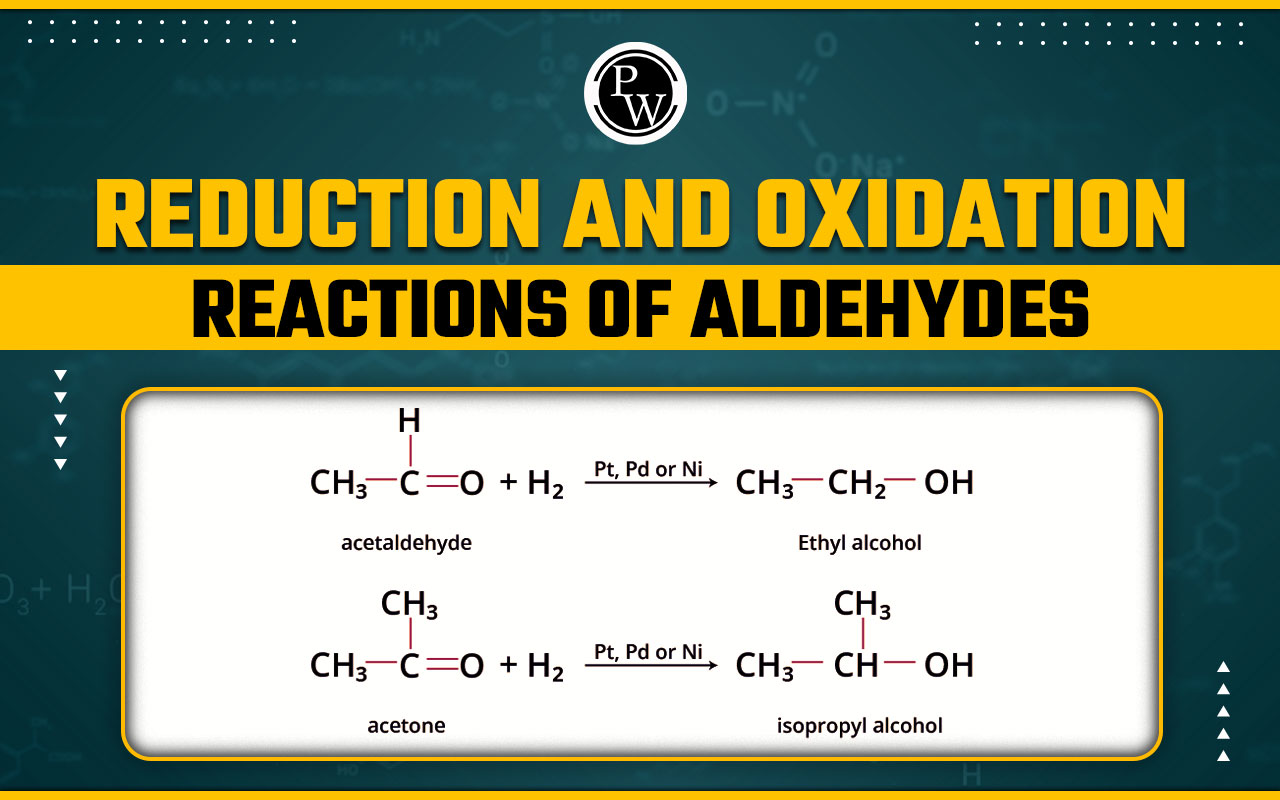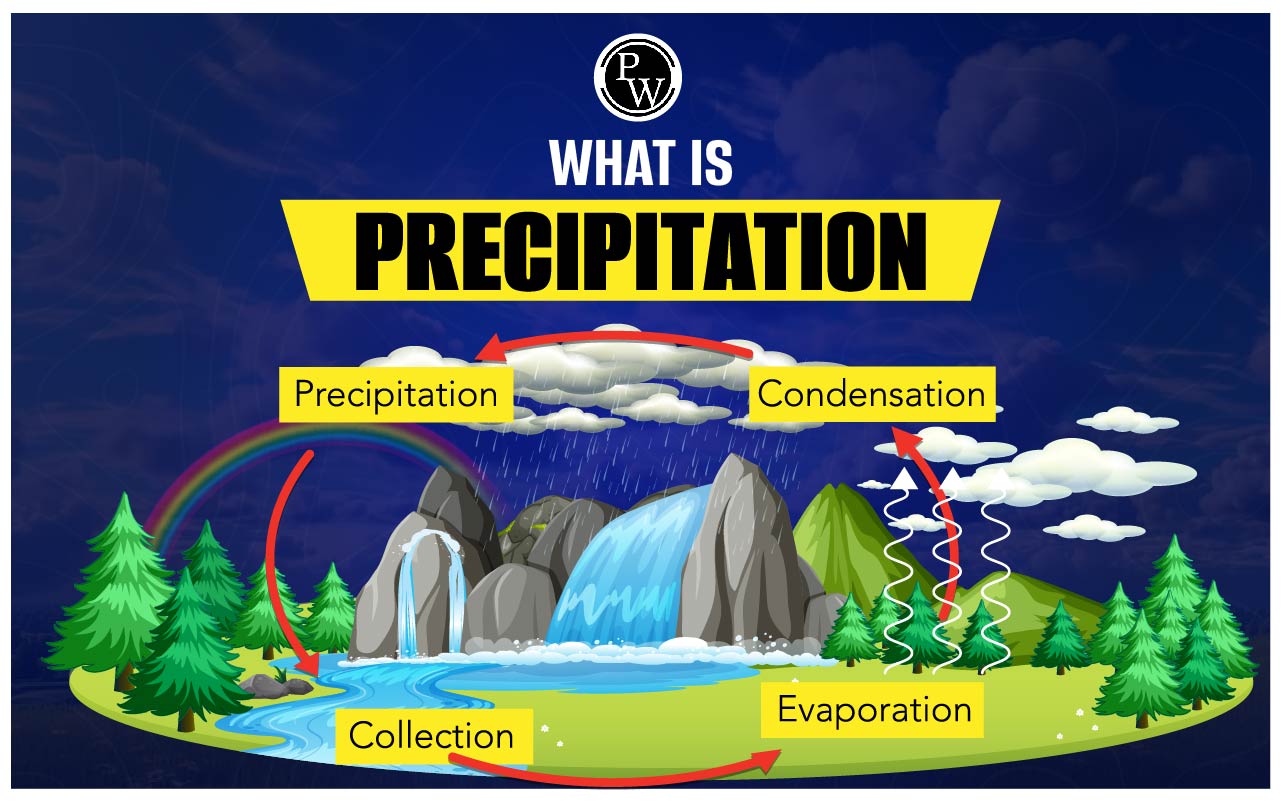

Reduction And Oxidation Reactions Of Aldehydes : Aldehydes and ketones can be reduced to produce primary or secondary alcohol using reagents uch as sodium borohydride (NaBH 4 ) or lithium aluminium hydride (LiAlH 4 ). Catalytic hydrogenation allows aldehydes and ketones to be converted into alcohol. Aldehydes and ketones undergo oxidation to produce carboxylic acid. Compared to ketones, aldehydes oxidize more quickly. Put another way, because aldehydes have a hydrogen atom in their functional group, they reduce more readily than ketones. Upon oxidation, aldehydes transform into their corresponding carboxylic acids.
Reduction Reactions : Aldehydes and ketones can be reduced to produce primary or secondary alcohol with the aid of reagents such as lithium aluminium hydroxide (LiAlH 4 ) or sodium borohydride (NaBH 4 ). Alcohol can also be produced through the catalytic hydrogenation of aldehydes and ketones.
Catalytic Reduction To Alcohol
Catalytic Reduction To Alcohol : Catalytic hydrogenation is the most straightforward large-scale method for reducing aldehydes and ketones to alcohols. A reduction (a gain of hydrogen) and an addition reaction (addition of H 2 ) occur simultaneously during catalytic hydrogenation. Alcohol is the product.
Clemmensen Reduction
The Clemmensen reduction is a chemical reaction that involves the use of zinc amalgam and concentrated hydrochloric acid to reduce ketones or aldehydes to alkanes. The name of this response comes from Erik Christian Clemmensen.
Wolf-Kishner reduction : In organic chemistry, the Wolff-Kishner reduction is a reaction that transforms carbonyl functionalities into methylene groups.
Reduction with HI + P (red)
Reduction with HI + P (red): Red phosphorus/HI reduces ketone, aldehyde to corresponding alkanes.
Reduction to pinacols : The Pinacol coupling reaction is the process by which ketones react with magnesium hydroxide over aqueous medium. The Pinacol coupling reaction is a class of process related to radicals. Carbonyl groups of ketones or aldehydes form carbon-carbon bonds during this process. An electron donor may be present during this reaction. The product of this reaction is vicinal diols, also known as pinacols.
Oxidation reactions
Oxidation reactions : Both aldehydes and ketones oxidize into carboxylic acid. Aldehydes are oxidized more quickly than ketones. In other words, because aldehydes contain a hydrogen atom in their functional group, they reduce better than ketones. Aldehydes oxidize to their corresponding carboxylic acids.
Oxidation with mild oxidizing agents
Oxidation with mild oxidizing agents:
Ketones are not oxidized by mild oxidizing agents. Tollen's reagent is reduced by aldehydes to metallic silver, which is visible on the test tube wall as a silver mirror. The silver mirror test is another name for this reaction.
Reduction of Fehling’s solution: Fehling's solution is an alkaline CuSO 4 solution combined with sodium potassium tartrate, or Rochelle salt. Aldehydes convert cupric ions (Cu 2+ ) from Fehling's solution to cuprous ions (Cu + ), resulting in the formation of a red precipitate of cuprous oxide.
Only aliphatic aldehydes can reduce Fehling's solution. Avoid giving this reaction to aromatic aldehydes and ketones.
Oxidation with strong oxidizing agent:
Oxidation with strong oxidizing agent:
Haloform Reaction
Haloform Reaction : Haloform reactions are a type of oxidation reaction. Haloforms such as chloroform (CHCl 3 ), bromoform (CHBr 3 ), or iodoform (CHI 3 ), as well as carboxylic acid, are produced when aldehydes or ketones react with halogens such as chlorine, bromine, or iodine in the presence of hydroxide ions. These reactions are primarily used to generate haloforms and convert acetyl groups into carboxyl groups. Haloform reactions can occur with compounds that contain at least one methyl group linked to the carbonyl carbon atom. Except for acetaldehyde, none of the other aldehydes undergo haloform reactions.
Reduction And Oxidation Reactions Of Aldehydes FAQs
Q.1: How can we oxidize ketones?
Q.2: How come aldehydes and ketones behave differently?
Q.3: What do aldehydes reduce to?
Q.4: Is Ag2O a mild oxidizing agent?
Q.5: What are reducing agents?












